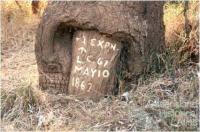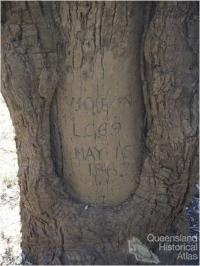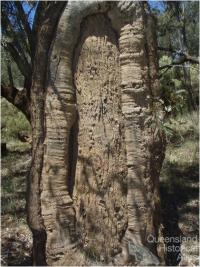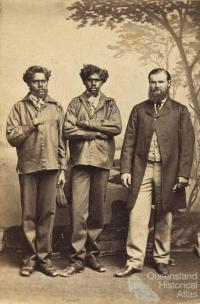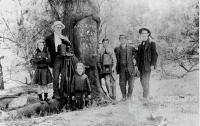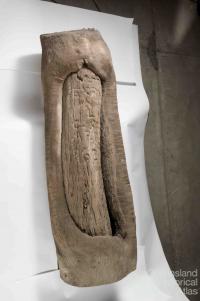- Home
- Quintessential Queensland
- Distinctiveness
- Perceptions
- Perceptions: how people understand the landscape
- From runs to closer settlement
- Geological survey of Queensland
- Mapping a new colony, 1860-80
- Mapping the Torres Strait: from TI to Magani Malu and Zenadh Kes
- Order in Paradise: a colonial gold field
- Queensland atlas, 1865
- Queensland mapping since 1900
- Queensland: the slogan state
- Rainforests of North Queensland
- Walkabout
- Queenslanders
- Queenslanders: people in the landscape
- Aboriginal heroes: episodes in the colonial landscape
- Australian South Sea Islanders
- Cane fields and solidarity in the multiethnic north
- Chinatowns
- Colonial immigration to Queensland
- Greek Cafés in the landscape of Queensland
- Hispanics and human rights in Queensland’s public spaces
- Italians in north Queensland
- Lebanese in rural Queensland
- Queensland clothing
- Queensland for ‘the best kind of population, primary producers’
- Too remote, too primitive and too expensive: Scandinavian settlers in colonial Queensland
- Distance
- Movement
- Movement: how people move through the landscape
- Air travel in Queensland
- Bicycling through Brisbane, 1896
- Cobb & Co
- Journey to Hayman Island, 1938
- Law and story-strings
- Mobile kids: children’s explorations of Cherbourg
- Movable heritage of North Queensland
- Passages to India: military linkages with Queensland
- The Queen in Queensland, 1954
- Transient Chinese in colonial Queensland
- Travelling times by rail
- Pathways
- Pathways: how things move through the landscape and where they are made
- Aboriginal dreaming paths and trading ways
- Chinese traders in the nineteenth century
- Introducing the cane toad
- Pituri bag
- Press and the media
- Radio in Queensland
- Red Cross Society and World War I in Queensland
- The telephone in Queensland
- Where did the trams go?
- ‘A little bit of love for me and a murder for my old man’: the Queensland Bush Book Club
- Movement
- Division
- Separation
- Separation: divisions in the landscape
- Asylums in the landscape
- Brisbane River
- Changing landscape of radicalism
- Civil government boundaries
- Convict Brisbane
- Dividing Queensland - Pauline Hanson’s One Nation Party
- High water mark: the shifting electoral landscape 2001-12
- Hospitals in the landscape
- Indigenous health
- Palm Island
- Secession movements
- Separate spheres: gender and dress codes
- Separating land, separating culture
- Stone walls do a prison make: law on the landscape
- The 1967 Referendum – the State comes together?
- Utopian communities
- Whiteness in the tropics
- Conflict
- Conflict: how people contest the landscape
- A tale of two elections – One Nation and political protest
- Battle of Brisbane – Australian masculinity under threat
- Dangerous spaces - youth politics in Brisbane, 1960s-70s
- Fortress Queensland 1942-45
- Grassy hills: colonial defence and coastal forts
- Great Shearers’ Strike of 1891
- Iwasaki project
- Johannes Bjelke-Petersen: straddling a barbed wire fence
- Mount Etna: Queensland's longest environmental conflict
- Native Police
- Skyrail Cairns (Research notes)
- Staunch but conservative – the trade union movement in Rockhampton
- The Chinese question
- Thomas Wentworth Wills and Cullin-la-ringo Station
- Separation
- Dreaming
- Imagination
- Imagination: how people have imagined Queensland
- Brisbane River and Moreton Bay: Thomas Welsby
- Changing views of the Glasshouse Mountains
- Imagining Queensland in film and television production
- Jacaranda
- Literary mapping of Brisbane in the 1990s
- Looking at Mount Coot-tha
- Mapping the Macqueen farm
- Mapping the mythic: Hugh Sawrey's ‘outback’
- People’s Republic of Woodford
- Poinsettia city: Brisbane’s flower
- The Pineapple Girl
- The writers of Tamborine Mountain
- Vance and Nettie Palmer
- Memory
- Memory: how people remember the landscape
- Anna Wickham: the memory of a moment
- Berajondo and Mill Point: remembering place and landscape
- Cemeteries in the landscape
- Landscapes of memory: Tjapukai Dance Theatre and Laura Festival
- Monuments and memory: T.J. Byrnes and T.J. Ryan
- Out where the dead towns lie
- Queensland in miniature: the Brisbane Exhibition
- Roadside ++++ memorials
- Shipwrecks as graves
- The Dame in the tropics: Nellie Melba
- Tinnenburra
- Vanished heritage
- War memorials
- Curiosity
- Curiosity: knowledge through the landscape
- A playground for science: Great Barrier Reef
- Duboisia hopwoodii: a colonial curiosity
- Great Artesian Basin: water from deeper down
- In search of Landsborough
- James Cook’s hundred days in Queensland
- Mutual curiosity – Aboriginal people and explorers
- Queensland Acclimatisation Society
- Queensland’s own sea monster: a curious tale of loss and regret
- St Lucia: degrees of landscape
- Townsville’s Mount St John Zoo
- Imagination
- Development
- Exploitation
- Transformation
- Transformation: how the landscape has changed and been modified
- Cultivation
- Empire and agribusiness: the Australian Mercantile Land and Finance Company
- Gold
- Kill, cure, or strangle: Atherton Tablelands
- National parks in Queensland
- Pastoralism 1860s–1915
- Prickly pear
- Repurchasing estates: the transformation of Durundur
- Soil
- Sugar
- Sunshine Coast
- The Brigalow
- Walter Reid Cultural Centre, Rockhampton: back again
- Survival
- Survival: how the landscape impacts on people
- Brisbane floods: 1893 to the summer of sorrow
- City of the Damned: how the media embraced the Brisbane floods
- Depression era
- Did Clem Jones save Brisbane from flood?
- Droughts and floods and rail
- Missions and reserves
- Queensland British Food Corporation
- Rockhampton’s great flood of 1918
- Station homesteads
- Tropical cyclones
- Wreck of the Quetta
- Pleasure
- Pleasure: how people enjoy the landscape
- Bushwalking in Queensland
- Cherbourg that’s my home: celebrating landscape through song
- Creating rural attractions
- Festivals
- Queer pleasure: masculinity, male homosexuality and public space
- Railway refreshment rooms
- Regional cinema
- Schoolies week: a festival of misrule
- The sporting landscape
- Visiting the Great Barrier Reef
By:
Owen Powell Thomas Welsby, former president of the Queensland Historical Society, described his impression of the explorer William Landsborough in 1935,
I saw him but once, and I can visualise him as he then was – a big broad shouldered robust man, determined in face and of character; the very type to engage in exploring work, not as a follower, but of a leader of men.
As Will Ogilvie’s poem suggests ‘The men who blazed the track’ were highly revered. Welsby, a timid youth of 22, had asked Landsborough particulars about climbing the Glass House Mountains near Caloundra where Landsborough had been living. Later he re-lived this experience, scrambling up Crookneck (Coonowrin) and discovering Landsborough’s name and the year 1872, firmly etched into the inner recess of a cave. For Welsby, the engraving had come from Landsborough’s ‘pioneering instinct’ of tree-marking his camps, reminding him of their first meeting years before, when Landsborough remarked that Crookneck will be climbed one day.
Landsborough explored central and north-western Queensland, though is perhaps better known through his involvement in the Burke and Wills relief expeditions that sought to uncover the whereabouts of those ill fated, trans-continental adventurers. In 1861 he was commissioned by the Queensland and Victorian Governments to lead a search party from the Gulf of Carpentaria, southwards. While Alfred Howitt’s party from Melbourne eventually discovered the lone survivor John King and that Burke and Wills were both dead, Landsborough’s expedition contributed to the development of geographical knowledge that would later encourage pastoral settlement.
Blazing trees
The practice of blazing trees that marked explorer’s journeys has often formed the focus of historical curiosity. Speculation over Leichhardt’s blazes circulated many years after his disappearance in 1848, while Burke and Wills’ ‘Dig Tree’ is one of the most profound symbols of their tragic saga. Returning to Coopers Creek from the Gulf, Brahe’s depot party blazed a tree with the instruction ‘dig’. A small cache of supplies was buried with a letter revealing they left only hours earlier. However, Burke and Wills and the remaining camels were too exhausted to follow. They later perished trying to live off Nardoo seeds while King survived, accepting gifts of food from local Aboriginal people.
Landsborough’s journey may lack some of the romance of these expeditions. However, the trees that still bear his inscription remind us of his presence in the landscape, providing a tangible connection to the events that surrounded his journey.
During his search in 1862 Landsborough visited the Warrego River, following the footsteps of Edmund Kennedy some seventeen years earlier. By 1862 pastoralists had crossed from the Darling River occupying the Warrego up to approximately 27° 38΄ where Landsborough came upon the first station and heard the news of Burke and Wills. He was later shown one of Kennedy’s blazes ‘K XXI’, though it appears that neither this nor any others remain. There are however, two trees blazed by Landsborough, still growing on the banks of the Warrego.
The presence of Landsborough’s trees is recorded by early maps, probably due to the speed at which land was occupied by squatters. Near Charleville, Landsborough noticed an unknown marked tree and evidence of stray cattle suggesting squatters were actively prospecting. The following year, an extensive survey was complete marking out pastoral blocks. This survey included the locations of Landsborough’s Camp 66 just north of Charleville, and Camp 67, near the junction of the Ward and Warrego Rivers.
While there are other trees recorded in Queensland, only Camp 67 and 69 are known to remain on the Warrego while the blaze from Camp 66 was removed and now kept by the Queensland Museum. The location of Landsborough’s remaining trees is a mystery. While it is unlikely that they will be found, this has not prevented enthusiasts continuing the search, or at least, locals keeping an eye out along the river, where the possibility of discovery still hangs in the air.
References and Further reading (Note):
Thomas Welsby, ‘William Landsborough: explorer’, Journal of the historical society of Queensland, 2, 1935
References and Further reading (Note):
William Landsborough, Journal of William Landsborough’s expedition from Carpentaria, in search of Burke and Wills, Melbourne, 1862
The men who blazed the track!
by Will Ogilvie
Since the toasts for the absent are over,
And duly we've pledged in our wine
Our Land, and our Friends, and our Lover,
Here's a toast for you, comrades o' mine :
To the fighting band that won the land
From the bitterest wastes out-back !
From hut and hall to the kings of all —
"The Men Who Blazed the Track!"
They rode away into the forest
In mornings gold-studded with stars,
And the song of the leaders was chorused
To the clinking of rowel and bars;
They fought for the fame of the Islands
And struck for the Width of the World,
They fashioned new roads in the silence
And flags in the fastness unfurled.
Their tents in the evening would whiten
The scrub, and the flash of their fires
Leap over the shadows to brighten
The way of Ambition's desires;
By the axe-marks we followed their courses,
For scarcely the ashes remain,
And the tracks of the men and the horses
Are hidden by dust-storm and rain.
The seasons from June to December
Are buried and born as of old,
But the peoples have ceased to remember
Who won them the laurels they hold;
Yet sometimes the North wind comes bringing
Those keener of hearing and sight
The music of lost axes ringing,
The beat of lost hoofs in the night.
Our pride is the path of our fathers,
Our hope's in the sons of our home,
And wherever our nation foregathers
Our nation is foremost to roam.
But the valleys that smile to our tillage,
The bills where our banners unfold,
Were won by the men of the village
And bought with their axes of old.
And we only ride with the flowing tide
As we follow the blazed line back,
So we'll drink the toast of the vanguard host,
And "The Men Who Blazed the Track!”
Will Ogilvie, ‘The Men Who Blazed the Track, Saddle for a throne, Adelaide, 1952

